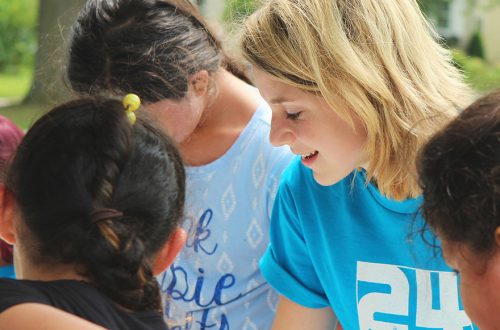How County Services are Funded
So That’s Where My Tax Money Goes
By Zach Friend, County Supervisor


The Board of Supervisors recently approved a $777 million budget. With a budget of this size it’s common to be asked why additional funds aren’t readily available for local parks, children’s cultural programs or even children’s health and welfare programs.
These are fair questions.
One of the best ways to understand how the county budget is allocated is to understand how much of your local taxes go directly to the county, how the county allocates its current budget and how we can improve these elements to ensure children’s health and cultural programs, parks and more are expanded.
Where exactly do our revenues come from that make up the budget?
Nearly 55 percent of all county revenues come from the state and federal government; a much different funding structure than cities. These funds are generally pass-through funds to provide state and federally mandated services such as health care programs. Some of this funding does go toward children’s health programs and local discretionary funding, meaning funding that the county can allocate without strings attached, has been used to leverage even more state and federal funds for children’s health programs.
For example, recently the county has been working with Dientes to significantly increase dental access for low-income children and their families through grant funding and health center partnerships. The county also created the thrive by three program which creates a funding stream for early childhood development services. The program invests in care for prenatal to 3-year-olds, which is the most rapid and critical period of brain development.
Approximately 22 percent of the county revenue comes from local taxes. And while property taxes make up about half of that 22 percent, you may be surprised to learn how little of your property tax dollar actually goes to the county.
For every dollar the county collects in property taxes, Santa Cruz County is only allowed to keep about 13 cents.
So where does the rest of your property tax go? The largest share, about 57 percent, goes to schools while another 17 percent goes to local special districts, cities and the libraries.
What about sales tax?
About 1 percent of local sales tax collected stays within the jurisdiction where it was spent. For example, assuming an 8.25 percent county sales tax here is the breakdown:
5.25 percent goes to the state; 1.25 percent goes to local libraries, the Metro (bus) and regional transportation projects; 0.5 percent is for Prop 172 local public safety mandates, 0.5 percent is for local health and social services which leaves 1 percent to pay for general purposes in the jurisdiction in which the tax was collected.
How are our taxes spent?
Last year about 33 percent was spent on health and sanitation services with another 26 percent on human services. Most of these human, health and sanitation expenditures are state and federal government mandates – most recently there are requirements associated with the Affordable Care Act.
The largest portion of the county’s discretionary spending is for public protection (Sheriff’s Dept., Probation, County Fire), which is 30 percent. A smaller percentage is allocated to Parks and Cultural services. While Parks has seen significant investments in the last few years, with the addition of some new staff, the opening of new parks in Aptos and Soquel and improvements to a number of parks, it’s clear that more needs to be done.
Funding for LEO’s Haven, the first all-inclusive playground in the county, is almost complete – but still needs a strong county contribution. A new pump track is slated for construction at Pinto Lake County Park, but many parks need upgrades to playground equipment or the installation of bathrooms. Children’s cultural programming, while increasing since the end of the great recession, is still below what used to be offered.
While the county has been fiscally responsible––over the last few years the county has tripled our reserves to protect against the inevitable economic downturns and reduce borrowing costs and this budget didn’t have cuts as budgets in many other counties throughout the state have–– we recognize that additional contributions to children’s programs and facilities are important. This will mean working toward increasing local funding opportunities, leveraging additional state funding and developing more public/private partnerships.







